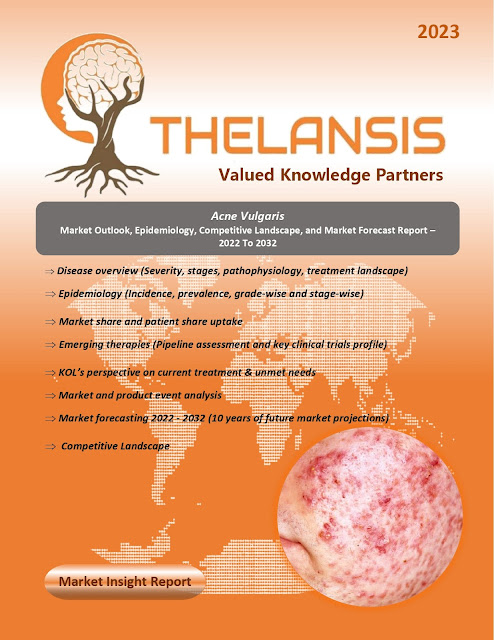Diabetic Macular Edema (DME) – Market Outlook, Epidemiology, Competitive Landscape, and Market Forecast Report – 2023 To 2033
Diabetic macular edema (DME) is primarily driven by chronic hyperglycemia, leading to increased vascular endothelial growth factor (VEGF) expression. This up-regulation results in heightened vascular permeability and elevated angiogenesis. While the fundamental pathophysiology of DME revolves around VEGF, emerging evidence suggests that inflammatory mediators also play a role, significantly contributing to the vascular permeability and edema observed in DME. The predominant cause of vision impairment in Diabetic Retinopathy (DR) is DME, which can manifest at any DR stage and is characterized by edema and retinal thickening, potentially accompanied by hard exudates. As the initial stages of DME are often asymptomatic, individuals with diabetes may be unaware of developing complications. Symptoms vary depending on the edema's location within the retina; non-center-involved macular edema typically lacks noticeable symptoms. However, when the edema reaches the central macula, patients commonly experience progressive vision loss, occurring over weeks to months from the onset of symptoms. Currently, anti-VEGF agents are the primary treatment for DME, necessitating intervention. Off-label use of intravitreal bevacizumab for ocular conditions has been practiced since 2005. The FDA approved ranibizumab for DME in 2012, followed by Aflibercept in 2014 and, more recently, Brolucizumab and Faricimab in 2022.
·
In the United States, an estimated 1.84
million individuals live with Vision-Threatening Diabetic Retinopathy (VTDR),
equating to a prevalence rate of 5.06% among people with diabetes.
Thelansis’s
“Diabetic Macular Edema (DME) Market Outlook, Epidemiology, Competitive
Landscape, and Market Forecast Report – 2023 To 2033" covers disease
overview, epidemiology, drug utilization, prescription share analysis,
competitive landscape, clinical practice, regulatory landscape, patient share,
market uptake, market forecast, and key market insights under the potential Diabetic
Macular Edema (DME) treatment modalities options for eight major markets (USA,
Germany, France, Italy, Spain, UK, Japan, and China).
KOLs insights of Diabetic Macular
Edema (DME) across 8 MM market from the centre of Excellence/ Public/ Private
hospitals participated in the study. Insights around current treatment
landscape, epidemiology, clinical characteristics, future treatment paradigm,
and Unmet needs.
Diabetic
Macular Edema (DME) Market Forecast Patient Based Forecast Model (MS.
Excel Based Automated Dashboard), which Data Inputs with sourcing, Market
Event, and Product Event, Country specific Forecast Model, Market uptake and
patient share uptake, Attribute Analysis, Analog Analysis, Disease burden, and
pricing scenario, Summary, and Insights.
Thelansis Competitive Intelligence (CI) practice
has been established based on a deep understanding of the pharma/biotech
business environment to provide an optimized support system to all levels of
the decision-making process. It enables business leaders in forward-thinking
and proactive decision-making. Thelansis supports scientific and commercial
teams in seamless CI support by creating an AI/ ML-based technology-driven
platform that manages the data flow from primary and secondary sources.
Tags: Diabetic
Macular Edema (DME), Diabetic Macular Edema (DME) market
outlook, Diabetic Macular Edema (DME) competitive
landscape, Diabetic Macular Edema (DME) market
forecast, Thelansis, Primary market research, KOL insights, Competitive
Intelligence (CI)



%20Market%20Outlook%20and%20Forecast.webp)
Comments
Post a Comment